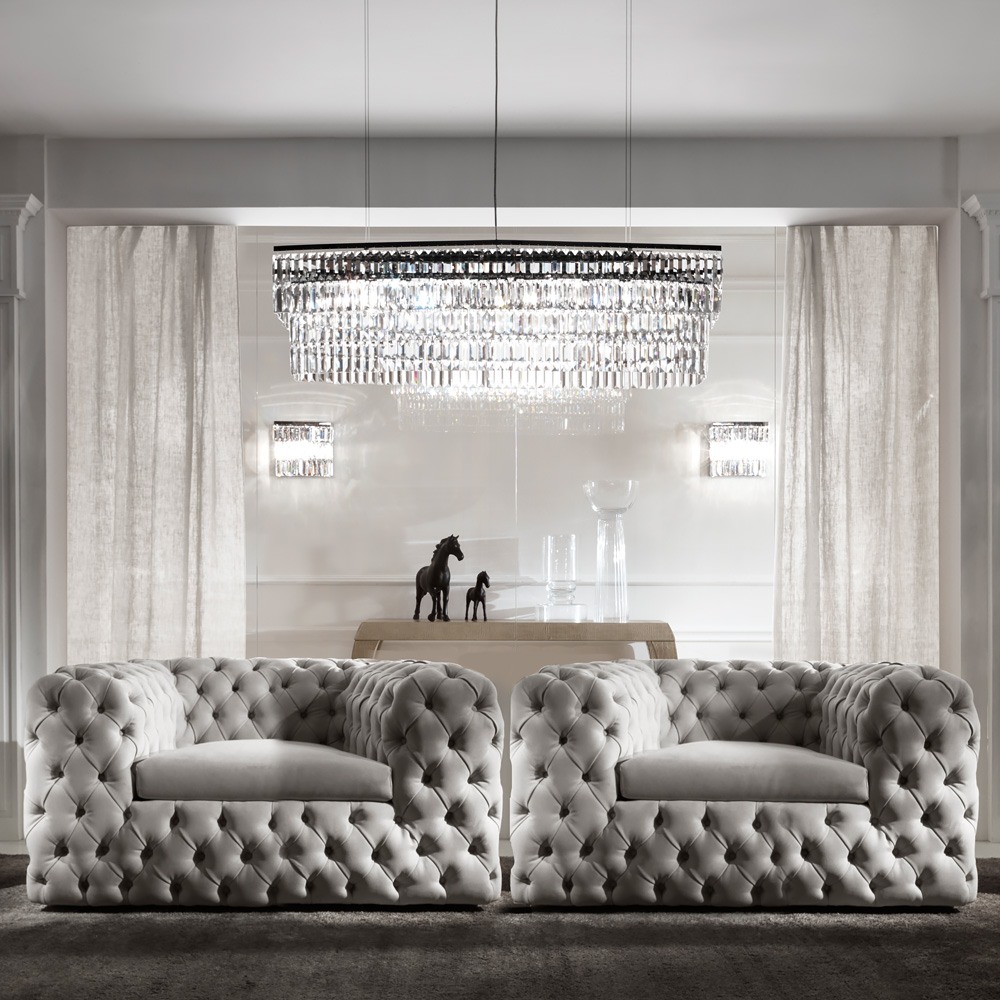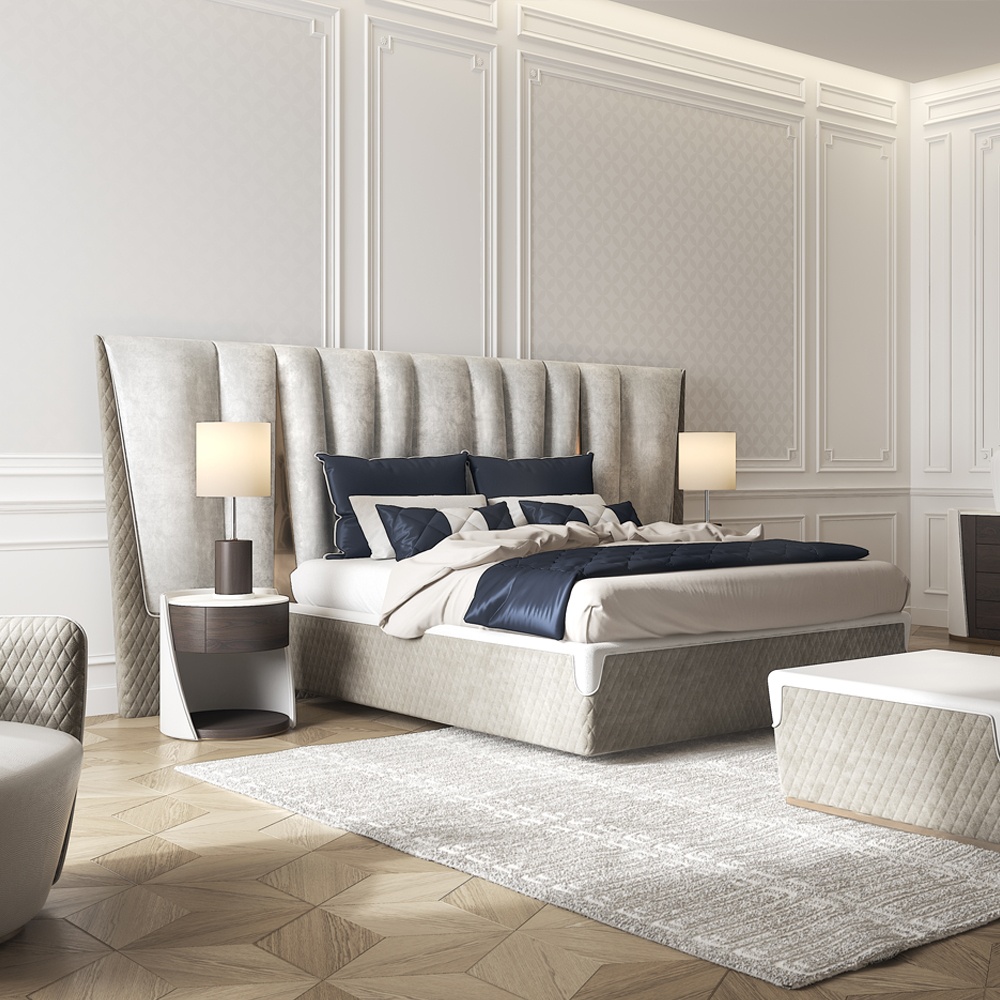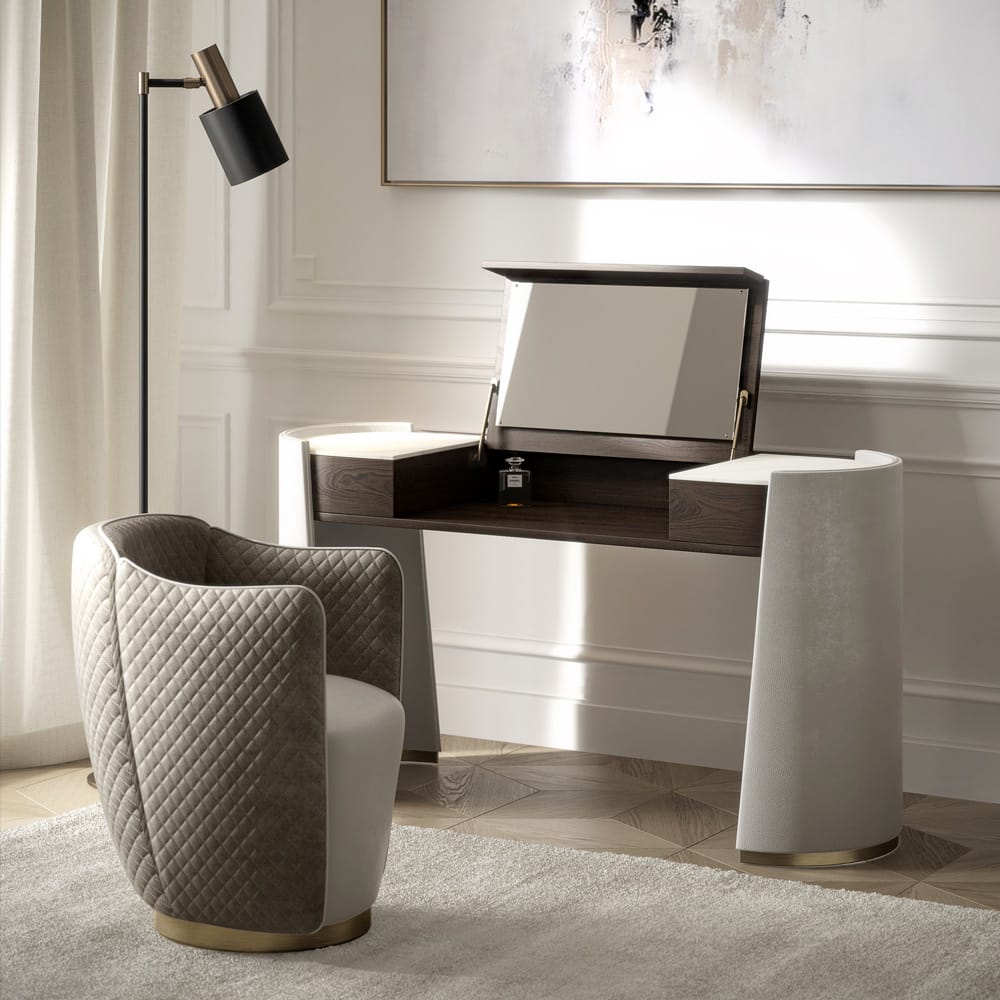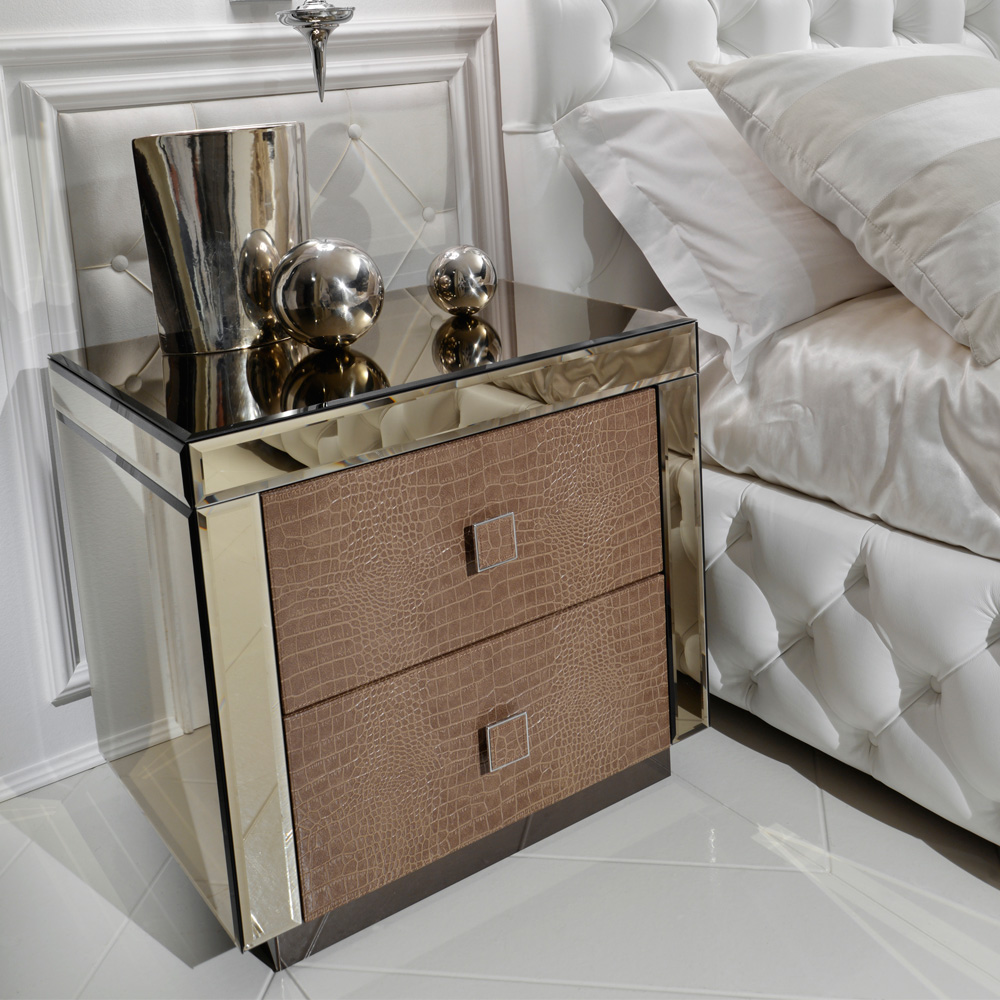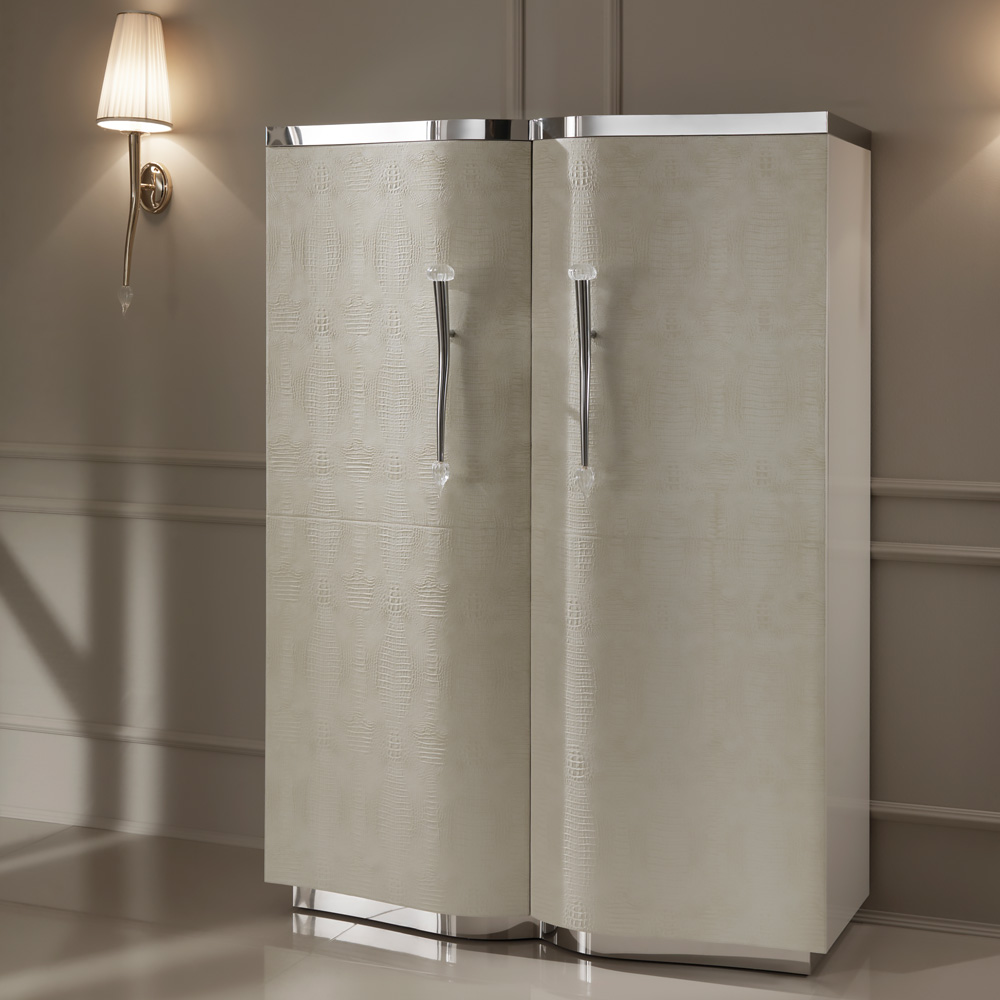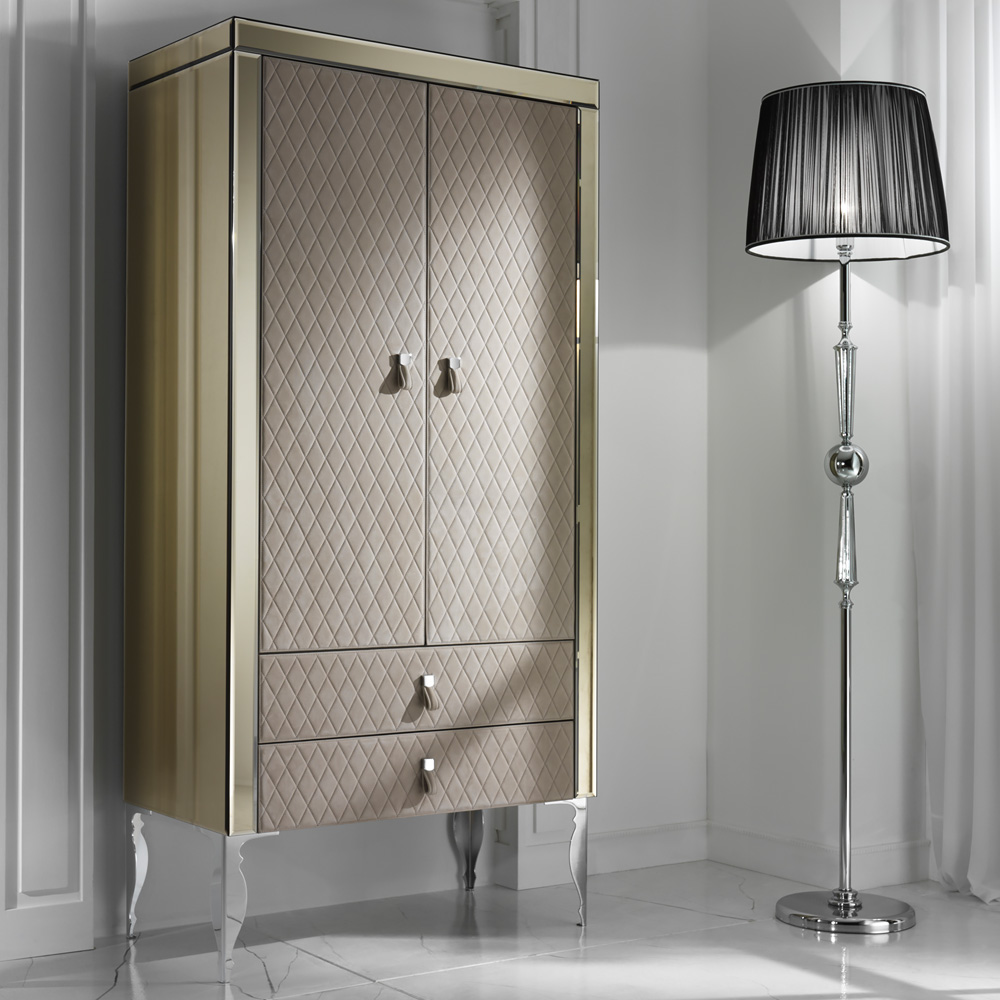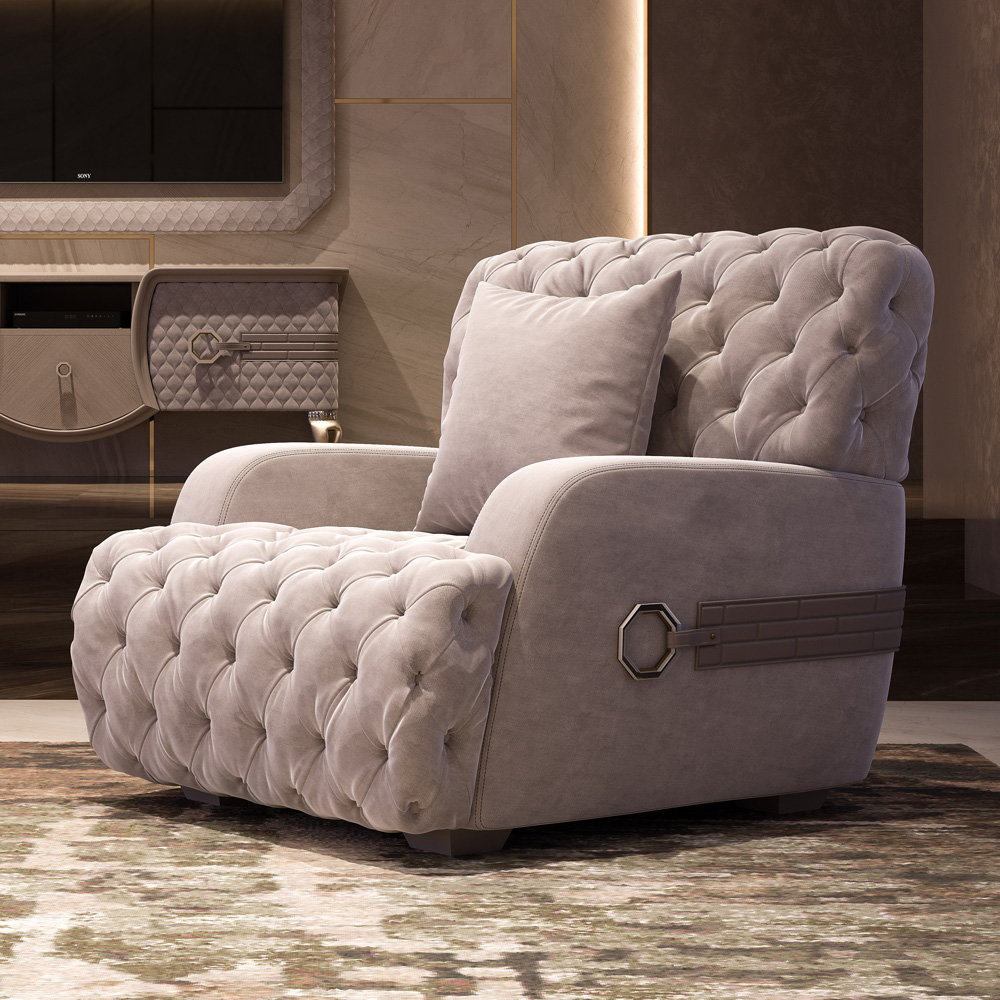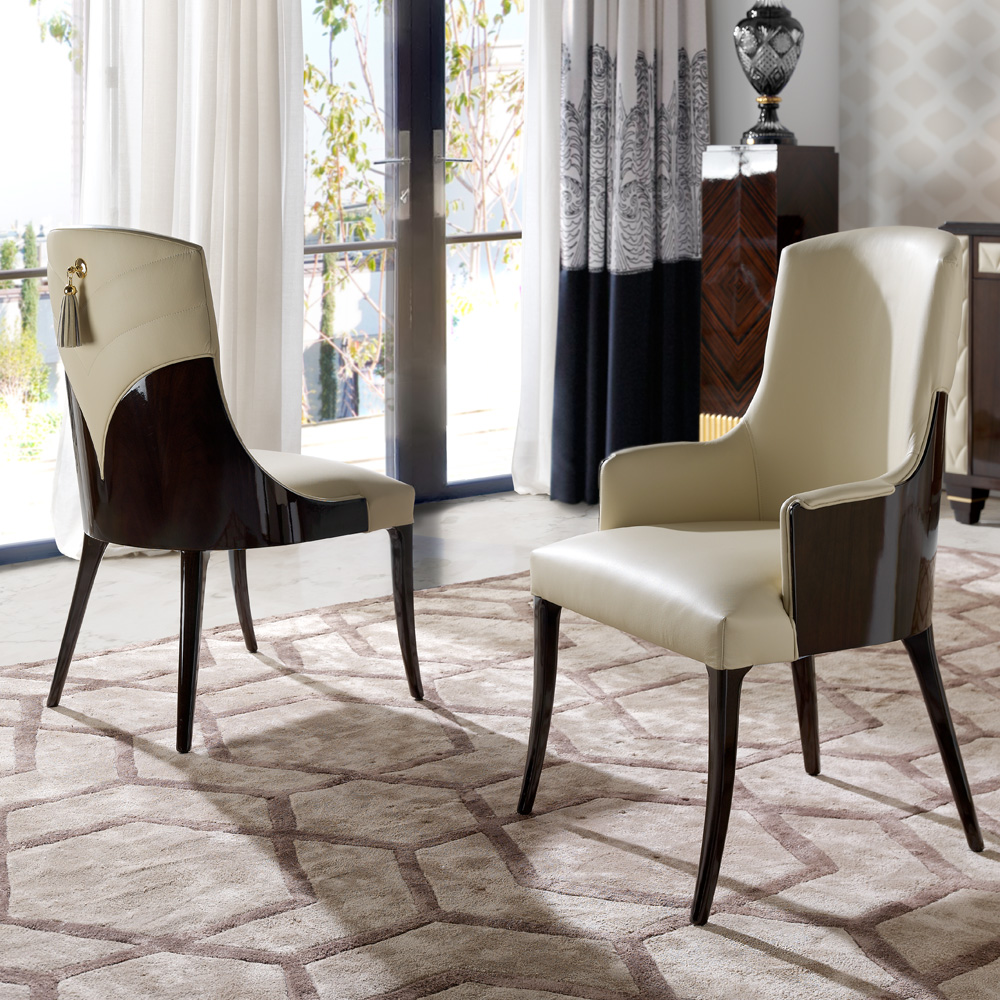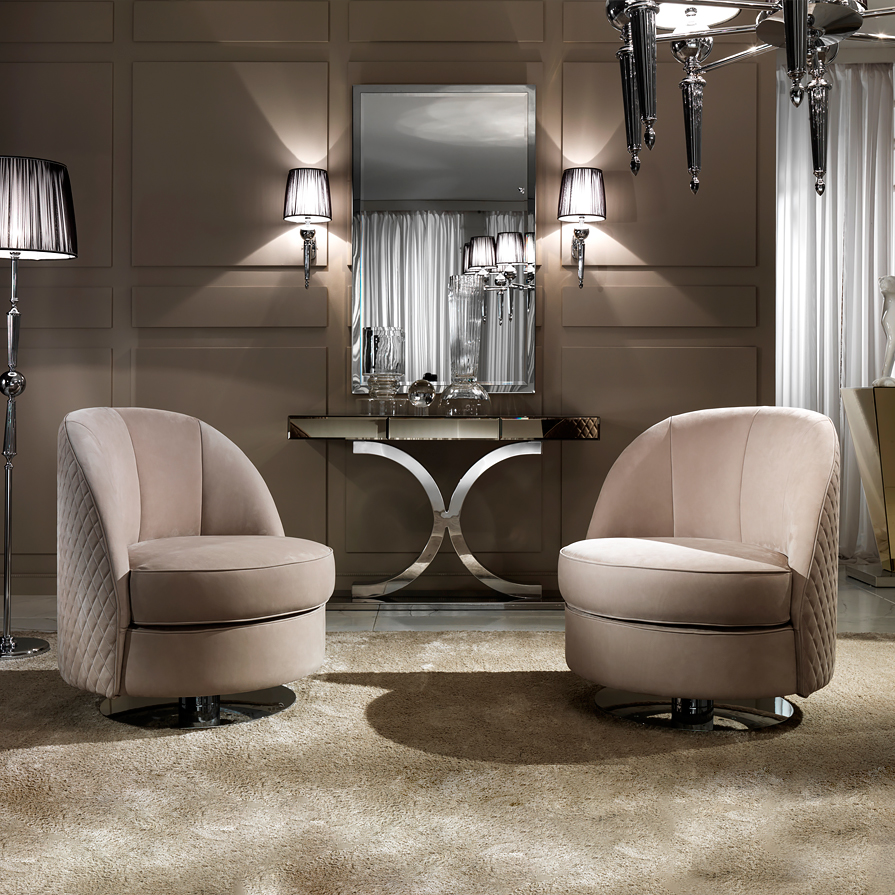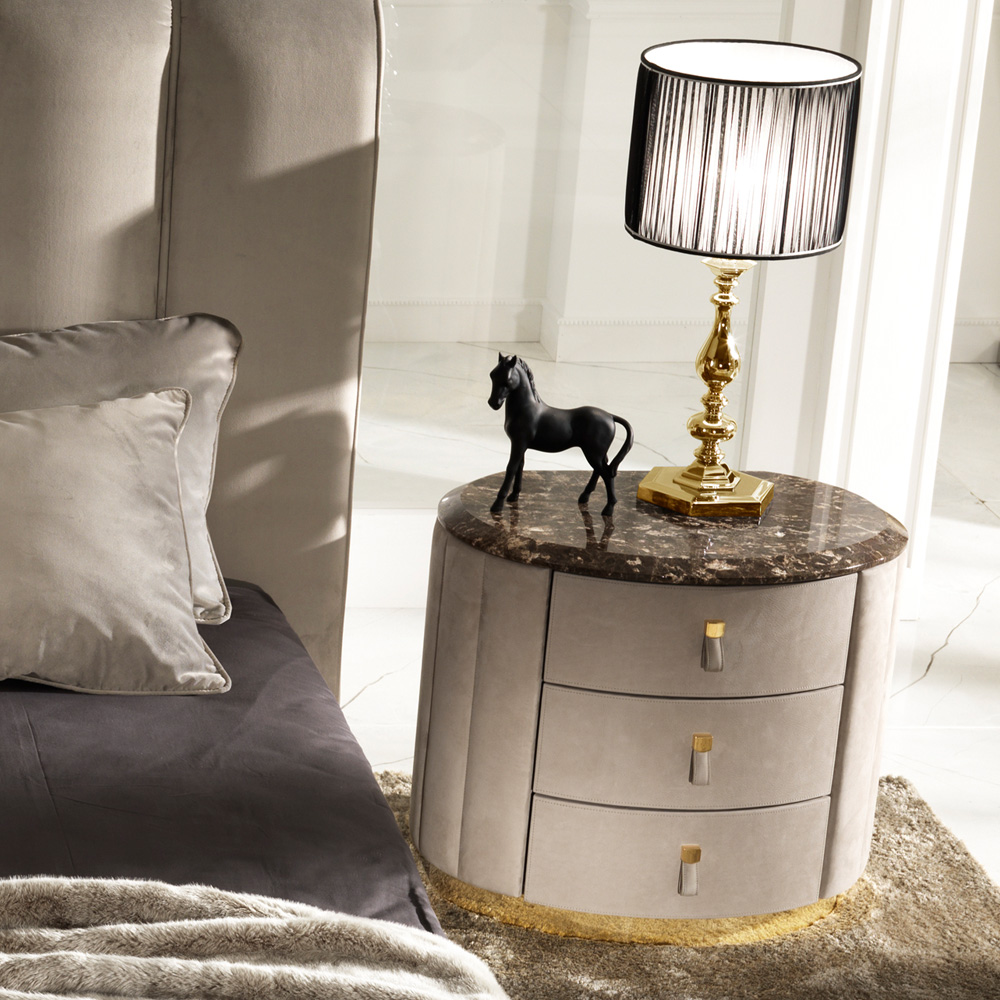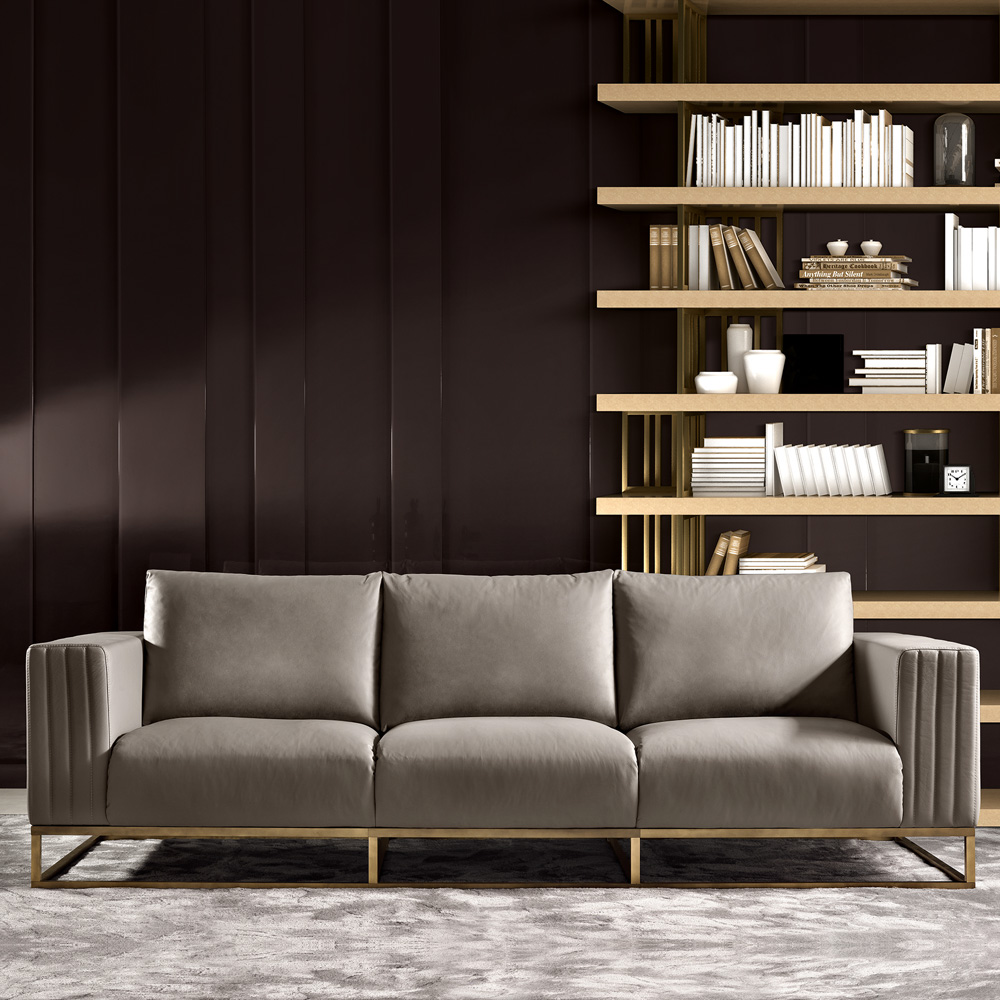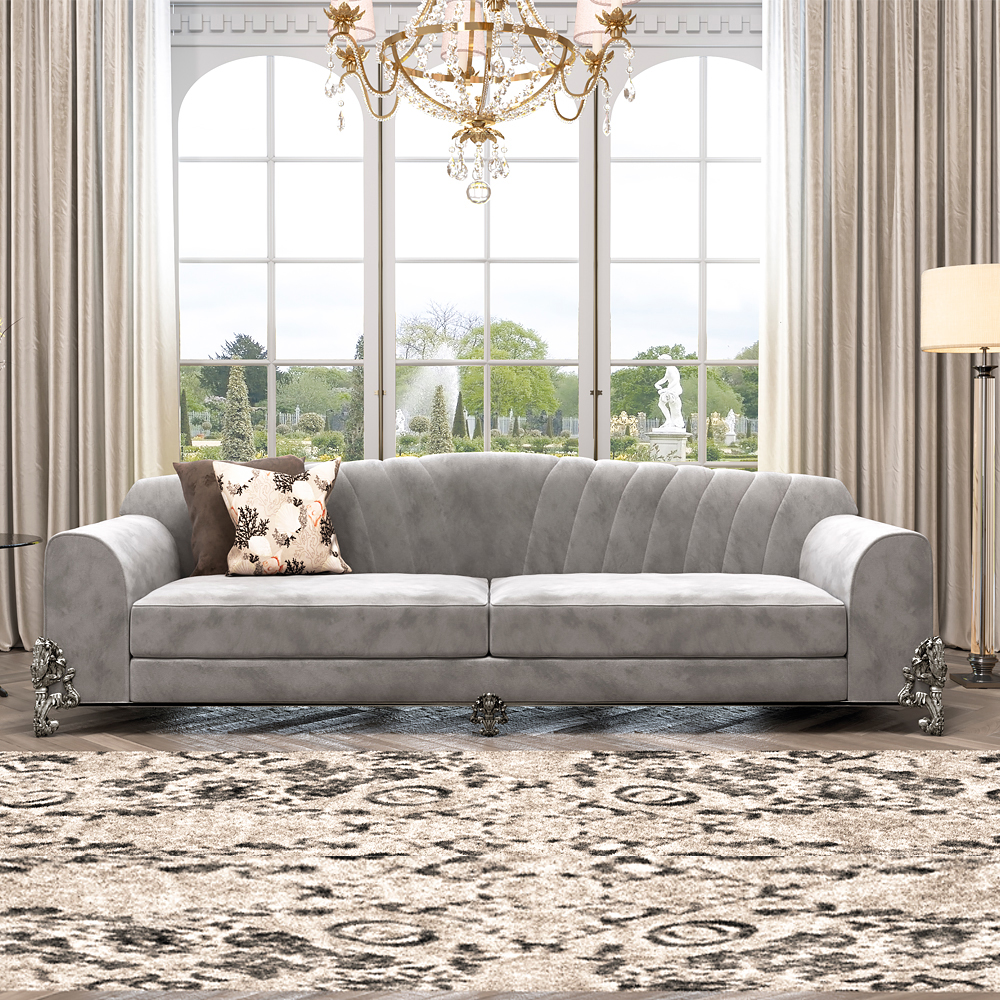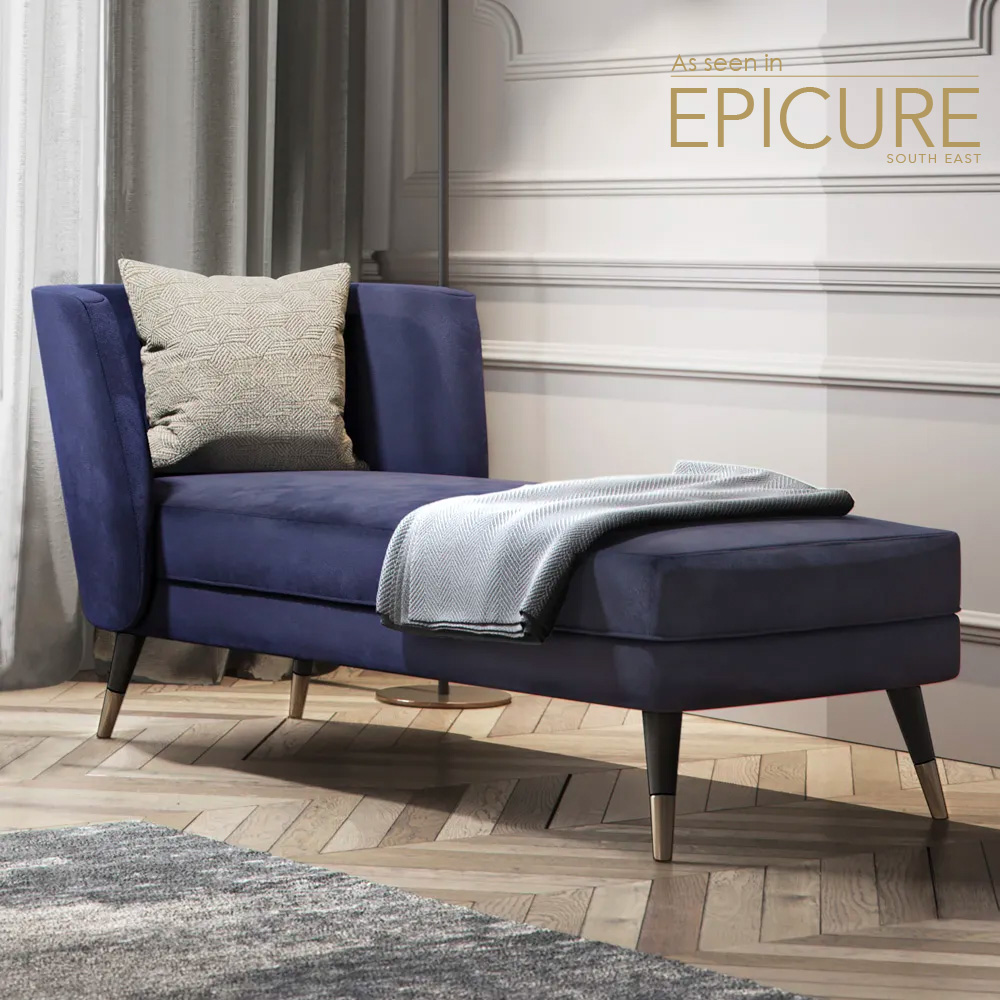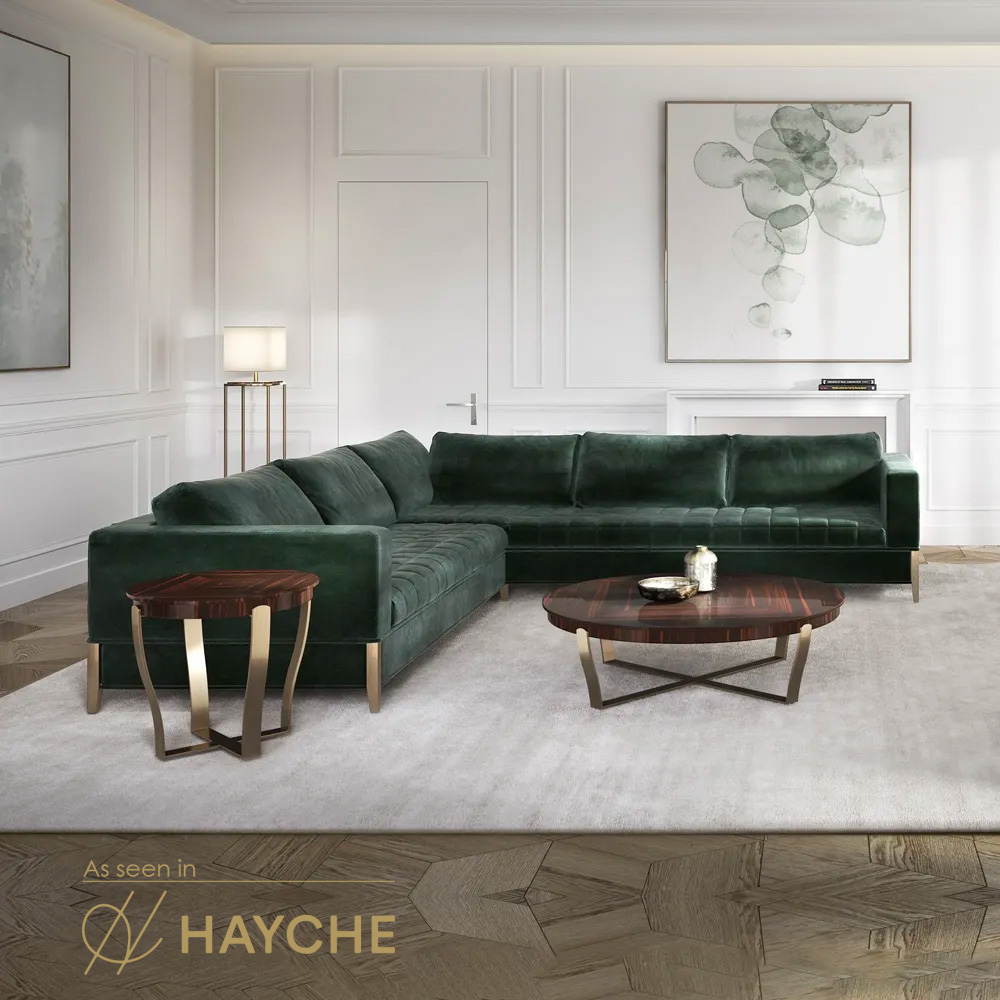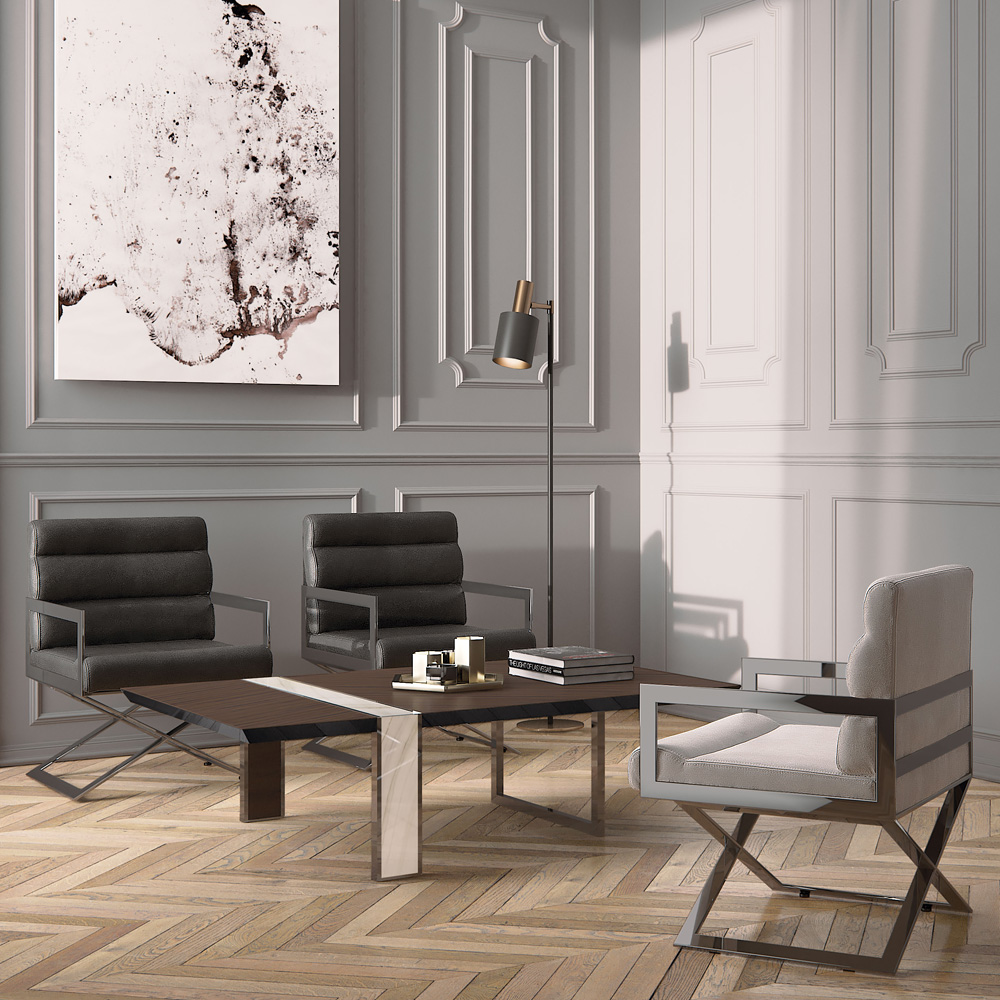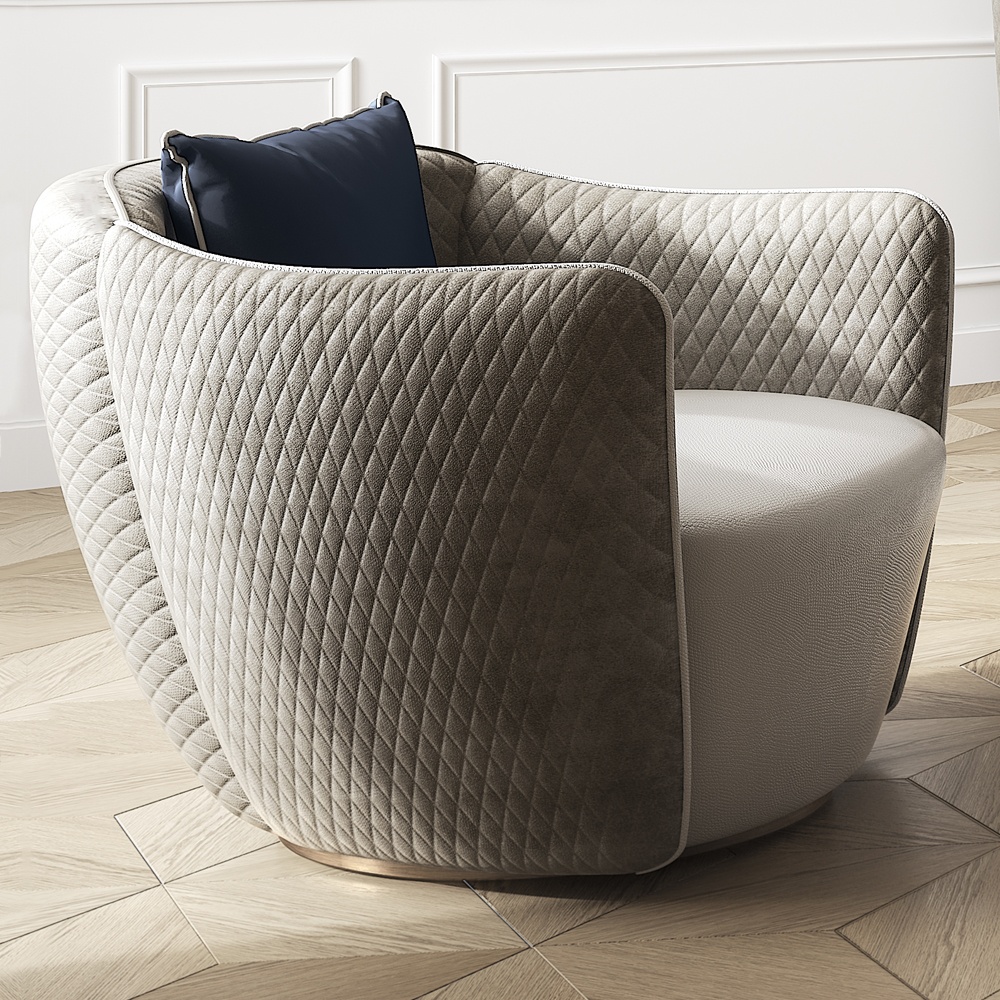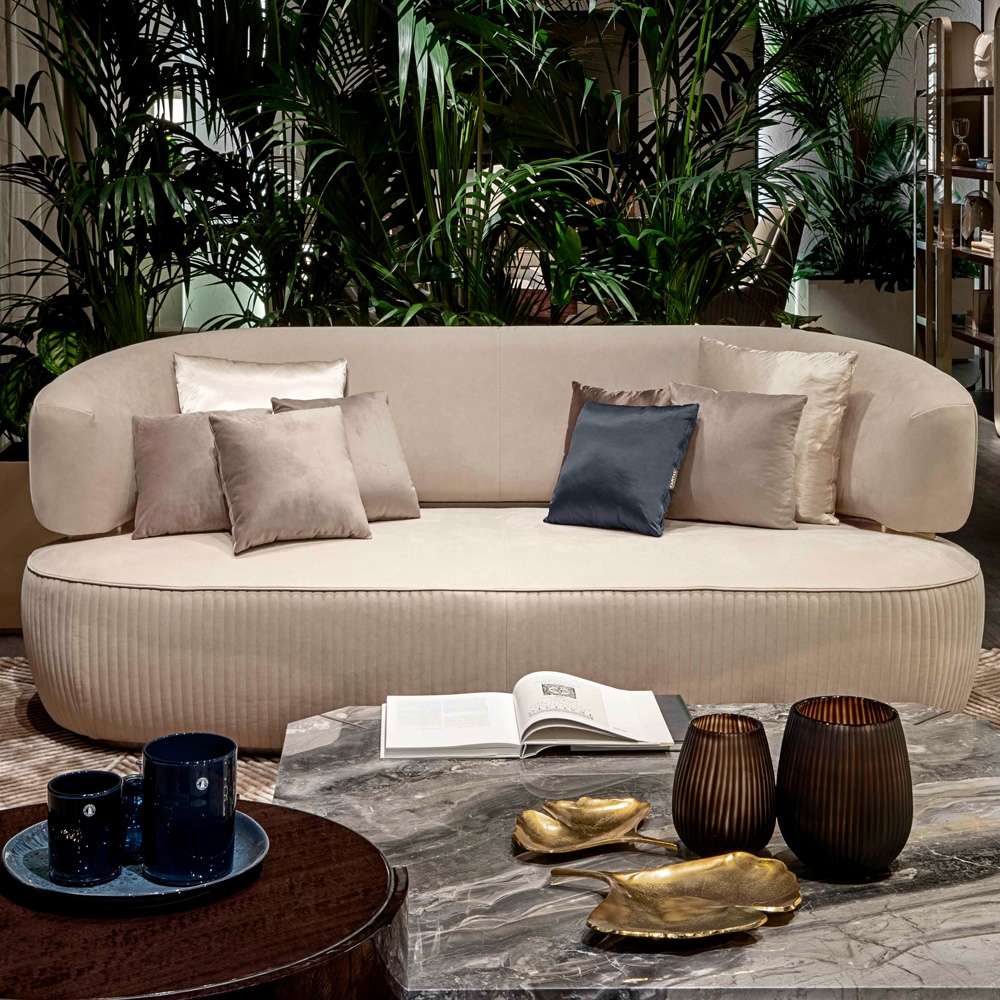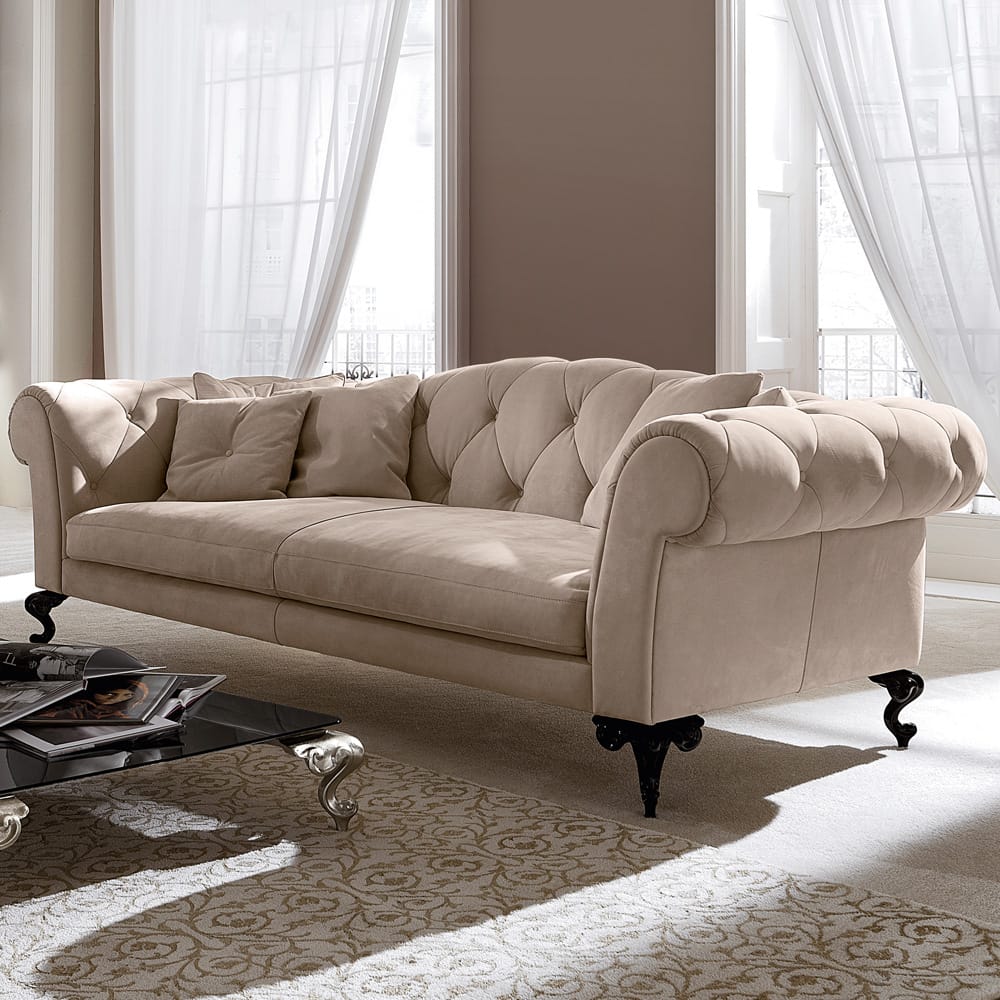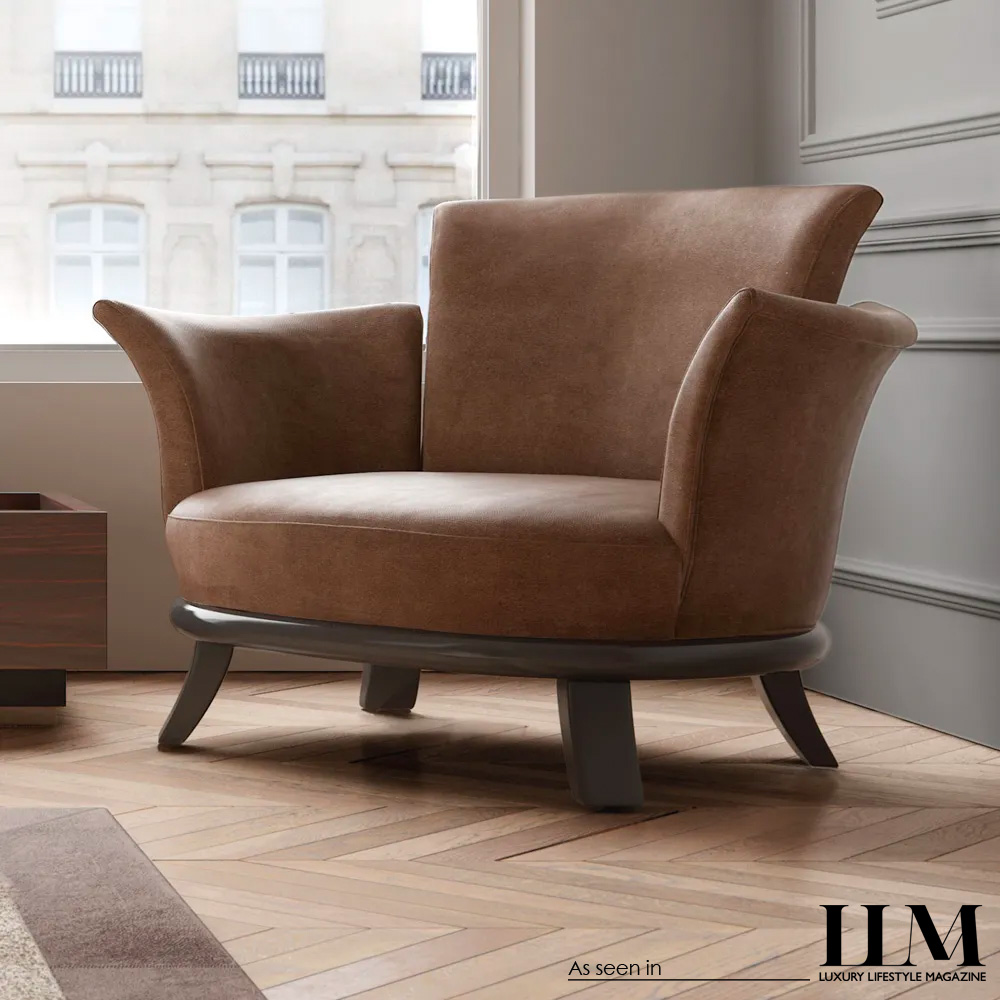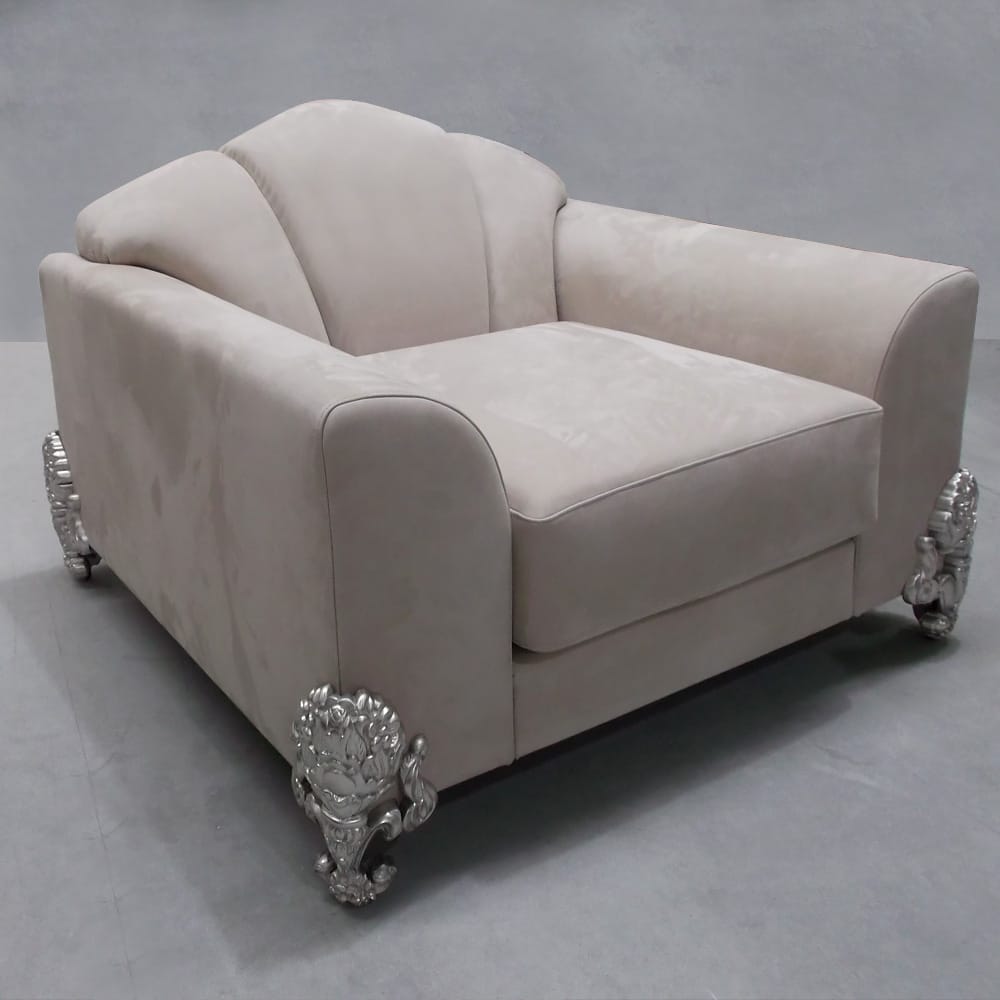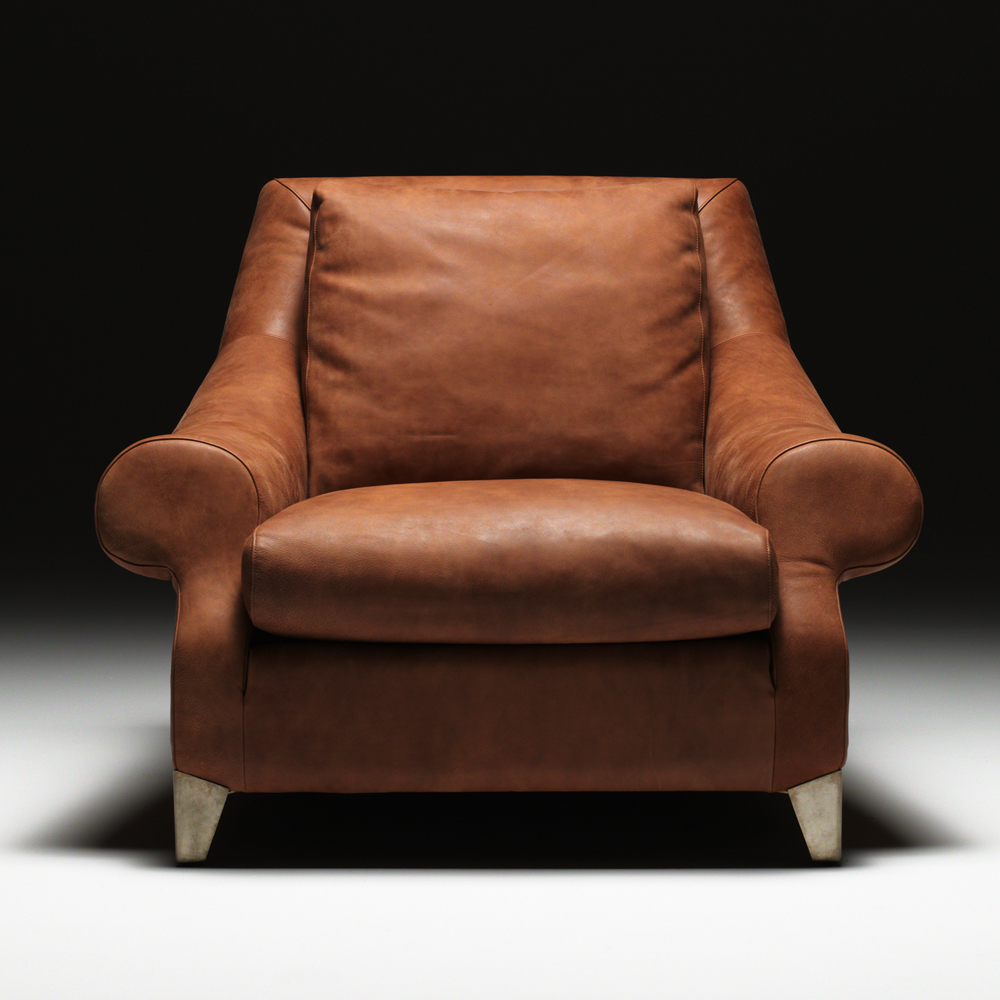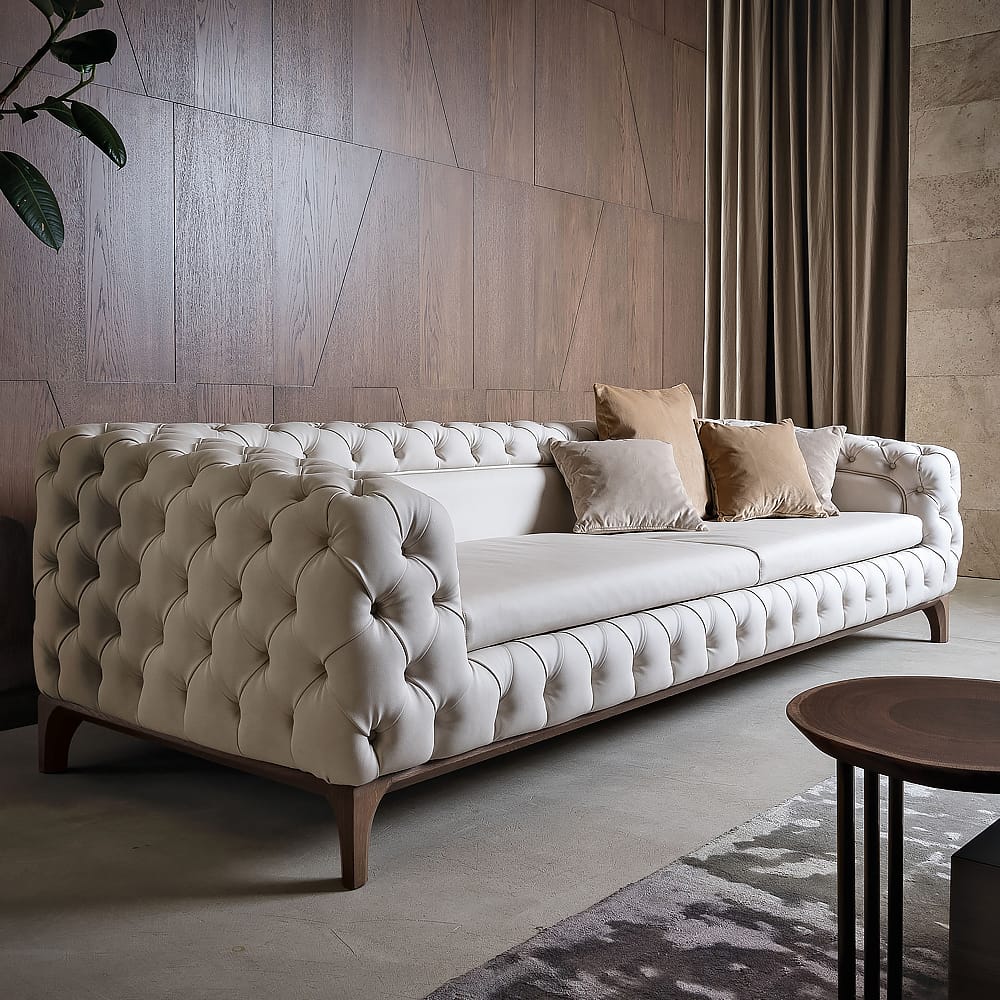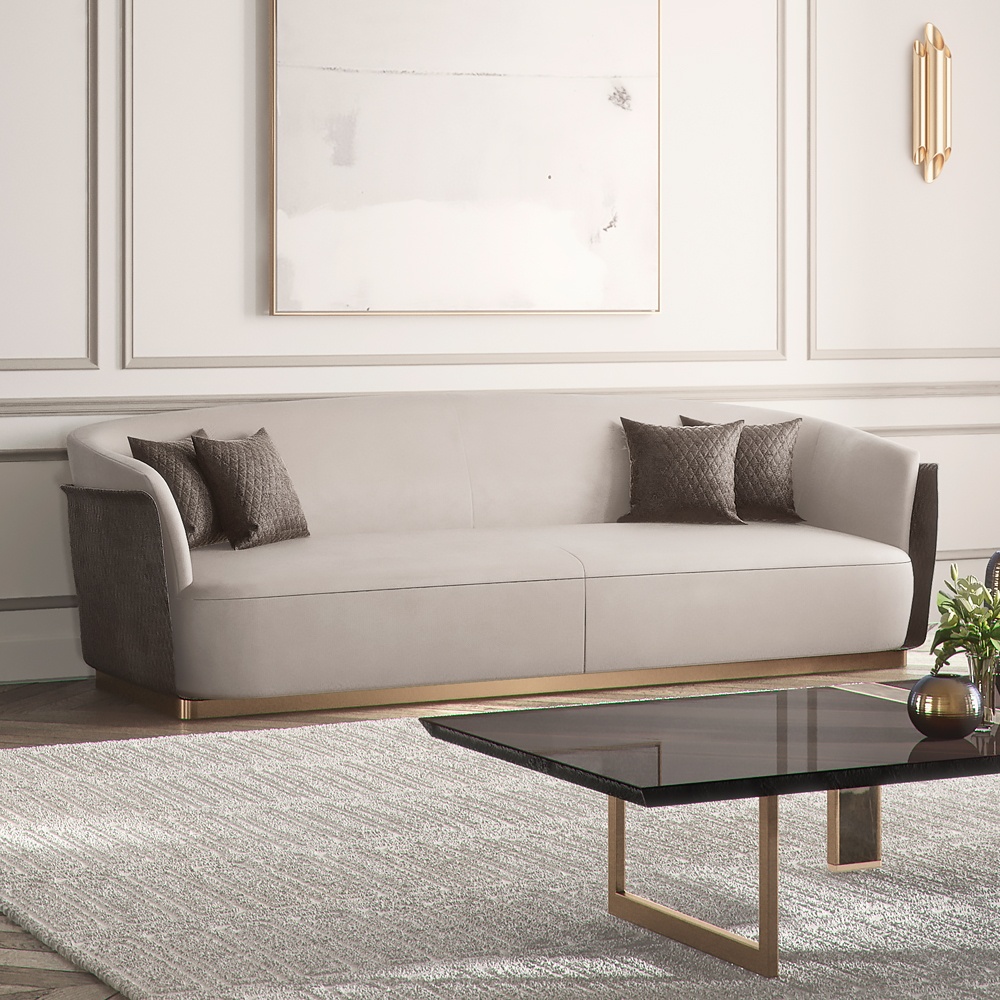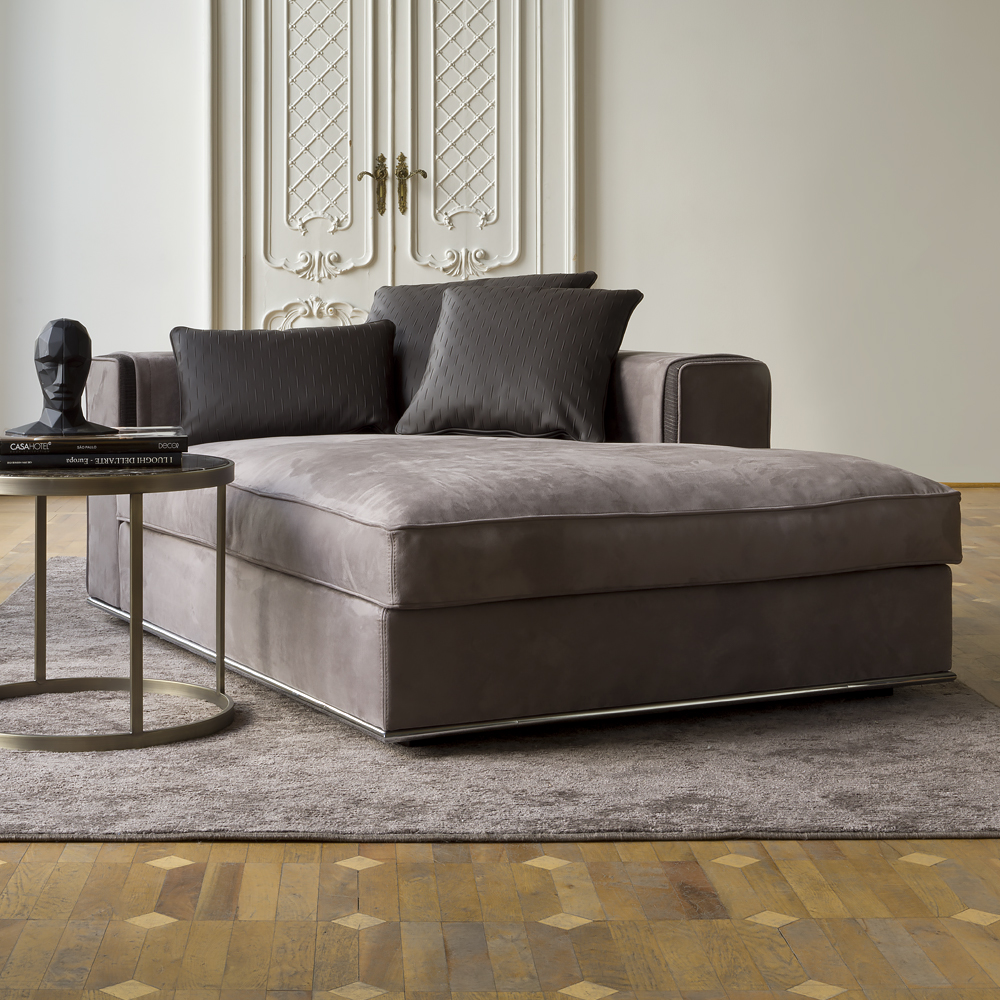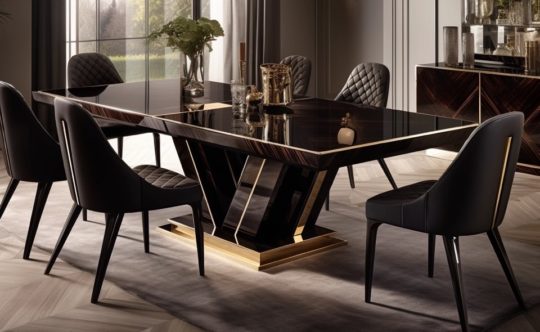There is something about luxury leather furniture that you can’t quite put your finger on. It is warm, it is luxurious and it is wonderful to sit on. When we talk about caring for your leather furniture, we are talking mostly about the heavy-use pieces such as sofas and chairs. Of course, here at Juliettes, we have a great many other types of leather furniture, such as luxury beds, bedside tables, sideboards and cabinets. As most of our luxury furniture pieces can be customised, you may choose a leather or nubuck upholstery on any number of pieces to set your furniture apart. The care information below applies to any piece of nubuck or leather furniture that is likely to be touched regularly, including doors and drawer fronts. These should be cared for just as gently as a sofa.
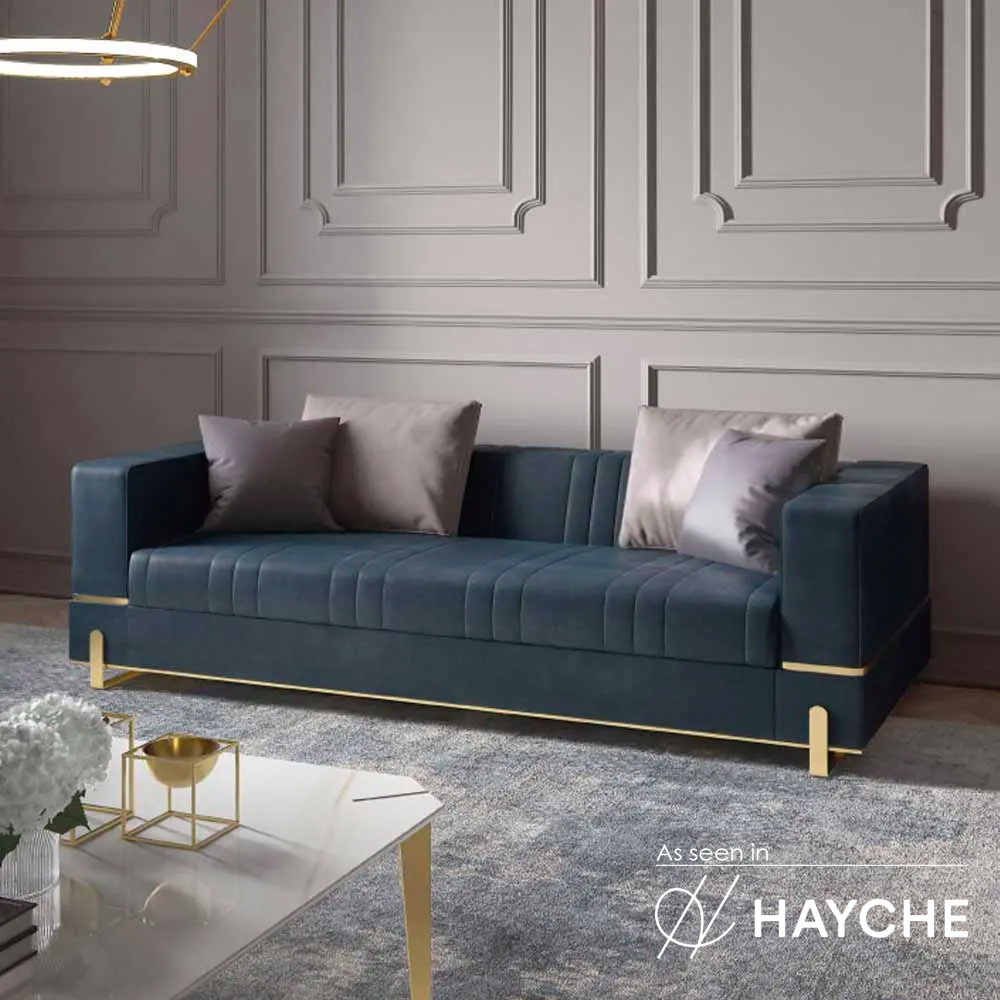
Natural Leather Furniture
Leather is a natural, organic material, which means it is subject to variations in grain and texture as well as any marks from the original hide. This is part of its charm and makes each piece unique. However, high end luxury leather furniture is always made using the very finest sections of the hide. There will always be subtle variations but you should not find major imperfections such as brand marks or scars in any of our pieces.
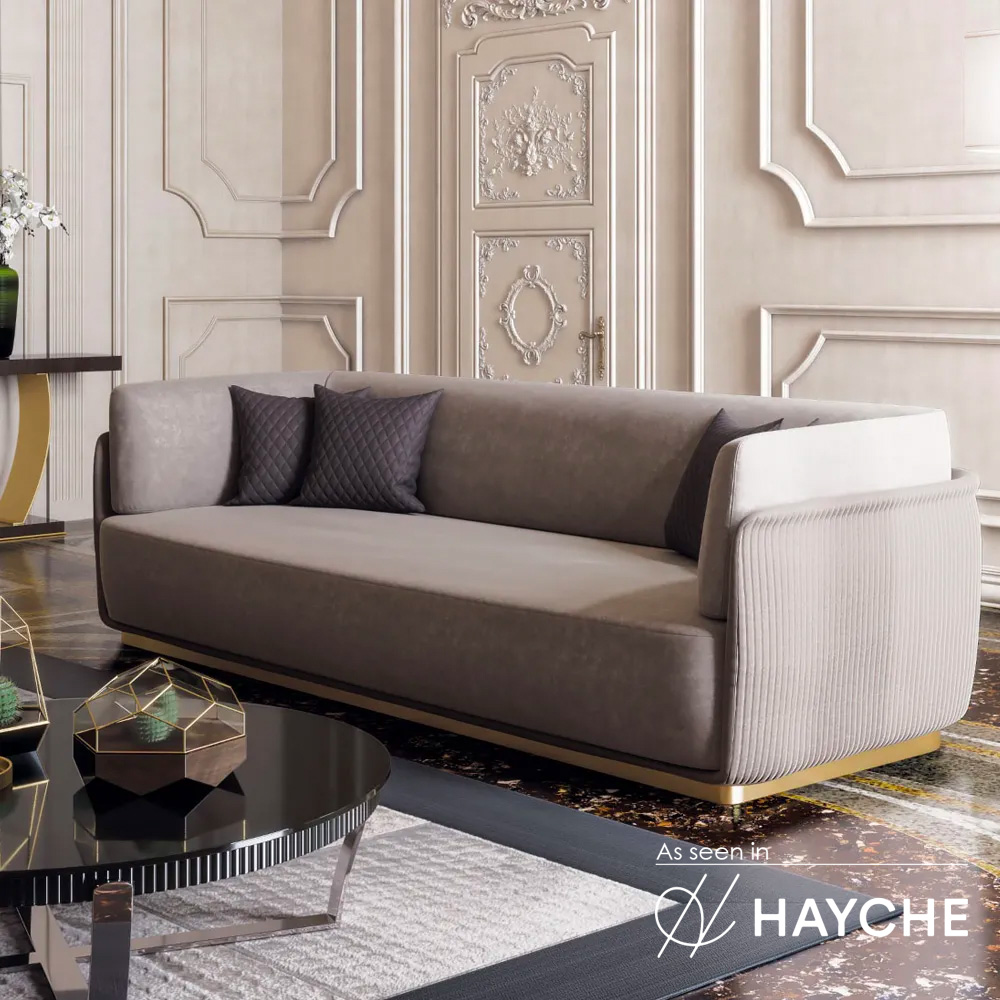
Leather, Nubuck and Suede
A quick word about these different finishes. All three are natural leather products and all are made from the same type of hide – usually cow or calf hide. A natural hide is generally too thick and stiff to be used when upholstering leather furniture. So, it is split into two layers, the ‘top grain’ or ‘full grain’ and the ‘split’.
- Top grain leather is the outer layer of the hide. It is usually treated with a clear top coat, making it more resistant to water and oil. When cared for correctly, it is long-lasting, durable and hardwearing.
- Nubuck is also made from the top grain leather, which is sanded to give a soft, velvety nap. It is usually left untreated so it is more porous than a treated leather.
- Suede is made from the split, or the underside of the hide, which is sanded. It is soft and very porous and, unless specially treated, is rarely used for most types of furniture – certainly anything that may be subject to wear. Extreme care has to be taken to avoid moisture and spills as they will ruin the surface.
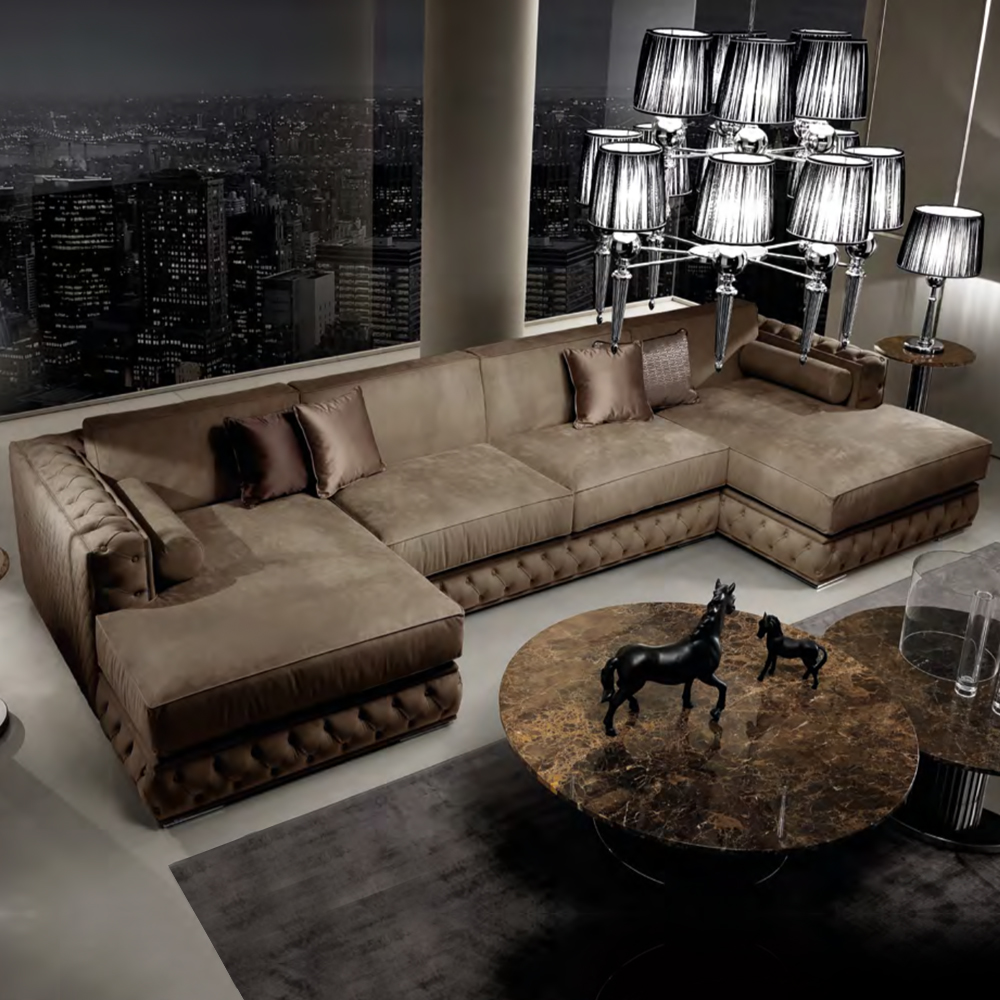
Care of Leather Furniture
So, you have your gorgeous leather furniture in place. It looks spectacular and is fabulous to sit on. How do you keep it that way for years to come?
Day-to-day cleaning
- For general, day-to-day cleaning, wipe a full grain leather with something like a microfibre cloth that will attract dust and dirt. You could also use the soft upholstery attachment on your vacuum cleaner. Do not use spray polish or water.
- Nubuck can also be vacuumed gently or you can use a special nubuck brush or cloth. You may also be able to find a nubuck eraser – often at a good quality shoe shop. With any of these, the most important thing is to be gentle. Do not over-rub.
- To give a flawless finish on nubuck furniture, use a DRY sponge and brush in one direction to align the nap.
- Tackle spills immediately. Use a white cloth or paper towel and blot the spillage. Do not rub as this will force the stain deeper into the leather. This is especially important on nubuck leather. You need to get the spillage out of the nap, not rub it in.
-
 High End Modern Nubuck Leather Upholstered Armchair£11,323.00 – £13,084.00
High End Modern Nubuck Leather Upholstered Armchair£11,323.00 – £13,084.00 -
 Exclusive Modern Italian Upholstered Leather Bed£23,483.00 – £27,174.00
Exclusive Modern Italian Upholstered Leather Bed£23,483.00 – £27,174.00
Deep cleaning
- For a deeper clean, we recommend that you use a gentle, good quality cleaner designed specifically for leather furniture. Follow that with a specialist leather protector. This needs to be done at least twice a year – or up to 4 times a year on areas prone to oily deposits, such as the headrest or armrests of sofas and chairs.
- Nubuck leather will have its own set of specialist products. Do not be tempted to use a normal leather cleaner or protector unless it specifically says it is suitable for nubuck. Nubuck is more porous than leather and will absorb more of your body’s natural oils (particularly from hands and hair).
- Be very careful of leather or nubuck doors and drawers. Try to touch the leather as infrequently as possible and always use the handles. If they do develop dirty hand marks – or you have a spillage – you may be able to clean them as you would a chair or sofa but do a patch test on an inconspicuous area first.
-
 Modern Italian Veneer And Leather Dressing Table Set£5,864.00 – £17,036.00
Modern Italian Veneer And Leather Dressing Table Set£5,864.00 – £17,036.00 -
 Embossed Pattern Leather and Mirrored Bedside Table£3,415.00
Embossed Pattern Leather and Mirrored Bedside Table£3,415.00
-
 Textured Leather Italian Designer Large Cabinet£19,049.00
Textured Leather Italian Designer Large Cabinet£19,049.00 -
 Bronze Mirrored Leather Tall Cabinet£14,866.00
Bronze Mirrored Leather Tall Cabinet£14,866.00
Things you should not do to leather furniture
- Never use baby wipes or other household cleaners and chemicals. You may think baby wipes are gentle but they contain chemicals that will damage your leather furniture.
- Never use olive oil or any other household oils to wipe your leather. Oils will be absorbed into the lower layers of the leather furniture, emerging in the future as spots or stains. Never use any type of oil on nubuck.
- Some DIY websites recommend a whole range of everyday products for cleaning or protecting leather furniture. These include hairspray, beeswax, nail polish remover, shoe polish, window cleaner, waxes and oils. We recommend that you avoid any product that is not specifically designed to clean or protect leather. All the products listed above can damage your leather long term.
-
 Luxury Designer Italian Button Upholstered Armchair£20,450.00
Luxury Designer Italian Button Upholstered Armchair£20,450.00 -
 Art Deco Inspired Walnut Leather Dining Chair£3,486.00 – £3,978.00
Art Deco Inspired Walnut Leather Dining Chair£3,486.00 – £3,978.00
Be careful how you sit
- Try not to sit with bare skin in contact with the leather (the same holds true for nubuck and suede). Your body’s natural oils will be absorbed into the leather and will attract dirt. Again, these oils may cause spots and stains in the future. This is particularly important if you use body lotions, moisturisers or sun creams.
- Do not sit on leather furniture in brand new jeans. There is always a risk of dye transfer, especially if the weather is humid. Make sure jeans have been washed several times before you curl up on the couch in them.
-
Product on sale
 Modern Italian Nubuck Leather Swivel Armchair£4,922.00 – £9,844.00
Modern Italian Nubuck Leather Swivel Armchair£4,922.00 – £9,844.00 -
 Nubuck Leather Luxury Oval Bedside Table£8,416.00
Nubuck Leather Luxury Oval Bedside Table£8,416.00
-
 High End Luxury Leather Contemporary Designer Sofa£19,310.00 – £24,524.00
High End Luxury Leather Contemporary Designer Sofa£19,310.00 – £24,524.00 -
 Classic Luxury Nubuck Leather Grey Sofa£17,570.00 – £18,800.00
Classic Luxury Nubuck Leather Grey Sofa£17,570.00 – £18,800.00
Leather in a Conservatory
Unfortunately, sun and leather are not the best of friends. Sunlight will damage leather by either fading or drying it, or both. Finished or treated leathers have a protective top coat that will resist fading to an extent but all leathers will fade if exposed to sunlight – in as little as 4-6 months if the light is strong enough.
The heat from sunlight (and radiators) will gradually dry out the moisture and natural oils in your leather furniture, causing it to dry, stiffen and crack if it is not looked after properly. The answer to both problems is to protect and maintain your leather furniture regularly. A well-maintained leather sofa will last 3 times longer than one that is ignored. To reduce sun damage, invest in some stylish conservatory blinds and keep them closed whenever you are not using the conservatory.
-
 Contemporary Italian Designer Leather Armchair£5,850.00 – £6,094.00
Contemporary Italian Designer Leather Armchair£5,850.00 – £6,094.00 -
 Exclusive Modern Italian Leather Armchair£5,985.00 – £6,458.00
Exclusive Modern Italian Leather Armchair£5,985.00 – £6,458.00
-
 Designer Modern Quilted Nubuck Italian Sofa£17,981.00 – £19,288.00
Designer Modern Quilted Nubuck Italian Sofa£17,981.00 – £19,288.00 -
 Italian Designer Nubuck Leather Button Upholstered Sofa£22,954.00
Italian Designer Nubuck Leather Button Upholstered Sofa£22,954.00
Enjoy your Leather Furniture
This may all sound like a lot to take in but, basically, you need to protect your leather furniture before you start to use it. Then clean it gently and re-protect it regularly. As leather furniture ages, it takes on a subtle beauty and patina – not to be confused with dirt or stains. Treat your leather furniture well and it will reward you with a lifetime of comfort and stunning good looks.
-
 Large Italian Designer Leather Round Armchair£6,306.00 – £7,287.00
Large Italian Designer Leather Round Armchair£6,306.00 – £7,287.00 -
 Classic Luxury Nubuck Leather Designer Armchair£10,326.00
Classic Luxury Nubuck Leather Designer Armchair£10,326.00 -
 Classic Leather Designer Armchair£7,535.00
Classic Leather Designer Armchair£7,535.00
-
 Luxury Italian Designer Button Upholstered Sofa£18,634.00
Luxury Italian Designer Button Upholstered Sofa£18,634.00 -
 Contemporary Italian Nubuck Sofa£20,522.00
Contemporary Italian Nubuck Sofa£20,522.00 -
 High End Contemporary Italian Chaise£12,988.00
High End Contemporary Italian Chaise£12,988.00
